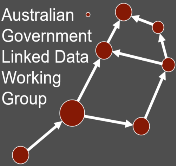The Analysis & Policy Observatory’s (APO) Public Policy Taxonomy allows the classification of activity related to practice and research across the full breadth of public policy. Coverage includes science and technology, the built and natural environment, education, health, indigenous and social issues.
The Public Policy Taxonomy features:
- synonym control that translates terminology used in research, libraries and government agencies to improve user tasks such as search and browse in retrieval systems
- a hierarchy that can be used as the basis of navigation and search augmentation.
The structure and scope of the Taxonomy is aligned with research and government classifications. Taxonomy terms have been semantically matched to ANZSRC-FOR (Australian Bureau of Statistics), AGIFT (National Archives of Australia), and FAST (OCLC). By applying the Public Policy Taxonomy to resources, collections become inferrable by, and are interoperable with ubiquitous research, government and library systems. APO is also backward-compatible with Australian Public Affairs Information Service Thesaurus (APAIST).
For example, the term ‘Erosion’ is linked to AGIFT function ‘Soil preservation programs’ and ANZSRC-FOR field ‘Land Capability and Soil Degradation’. Erosion is also matched with the same FAST term, which links into further associated and specific topics.
APO (apo.org.au) is an open access repository of grey literature on public policy, with a focus on Australia and New Zealand. The Public Policy Taxonomy has been derived from subject metadata curation and contributions from APO users; which has evolved over time. Relationships between subjects are based on analysis of thesaurus standards and text mining.
